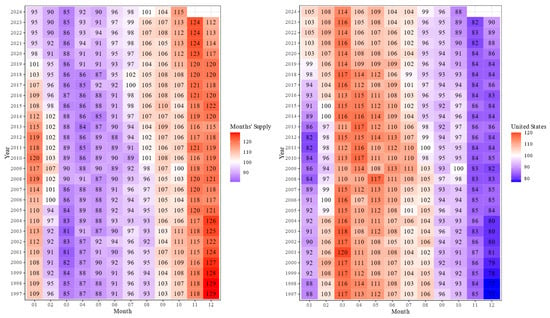Journal Description
Real Estate
Real Estate
is an international, peer-reviewed, open access journal on real estate, published quarterly online by MDPI.
- Open Access— free for readers, with article processing charges (APC) paid by authors or their institutions.
- Rapid Publication: first decisions in 19 days; acceptance to publication in 4 days (median values for MDPI journals in the first half of 2025).
- Recognition of Reviewers: APC discount vouchers, optional signed peer review, and reviewer names published annually in the journal.
Latest Articles
Seasonality in the U.S. Housing Market: Post-Pandemic Shifts and Regional Dynamics
Real Estate 2025, 2(4), 22; https://doi.org/10.3390/realestate2040022 - 15 Dec 2025
Abstract
Seasonality has traditionally shaped the U.S. housing market, with activity peaking in spring-summer and declining in autumn-winter. However, recent disruptions, particularly those following COVID-19, raise questions about shifts in these patterns. This study analyzes housing market data (1991–2024) to examine evolving seasonality and
[...] Read more.
Seasonality has traditionally shaped the U.S. housing market, with activity peaking in spring-summer and declining in autumn-winter. However, recent disruptions, particularly those following COVID-19, raise questions about shifts in these patterns. This study analyzes housing market data (1991–2024) to examine evolving seasonality and regional heterogeneity. Using Housing Price Index (HPI) data, inventory, and sales data from the Federal Housing Finance Agency and U.S. Census Bureau, seasonal components are extracted via the X-13-ARIMA procedure, and statistical tests assess variations across regions. The results confirm seasonal fluctuations in prices and volumes, with recent shifts toward earlier annual peak (March–April) and amplified seasonal effects. Regional variations align with differences in climate and market structure, while prices and sales volumes exhibit in-phase movement, suggesting thick-market momentum behaviour. These findings highlight key implications for policymakers, realtors and investors navigating post-pandemic market dynamics, offering insights into the timing and interpretation of housing market activities.
Full article
(This article belongs to the Special Issue Developments in Real Estate Economics)
►
Show Figures
Open AccessFeature PaperReview
50 Years of Research in Real Estate Brokerage: A Semi-Systematic Literature Review
by
Martin Ahlenius, Björn Berggren and Neville Hurst
Real Estate 2025, 2(4), 21; https://doi.org/10.3390/realestate2040021 - 4 Dec 2025
Abstract
Intermediaries are central to complex transactions. In housing markets, real estate brokers coordinate information flows, reduce search costs, and guide lay buyers and sellers through legal and financial steps. Despite this importance, scholarship on brokerage is dispersed across disciplines and methods. This paper
[...] Read more.
Intermediaries are central to complex transactions. In housing markets, real estate brokers coordinate information flows, reduce search costs, and guide lay buyers and sellers through legal and financial steps. Despite this importance, scholarship on brokerage is dispersed across disciplines and methods. This paper presents a semi-systematic review of peer-reviewed articles published between 1970 and 2021. We map (i) study characteristics (country of origin and field), (ii) the distribution of units of analysis (individual, firm/organization, market), and (iii) the most frequently examined topics. Our synthesis indicates steadily rising academic interest but a fragmented knowledge base. We conclude by highlighting gaps—especially the scarcity of cross-country comparisons and the relative lack of qualitative and mixed-method studies on brokers’ practices and experiences.
Full article
(This article belongs to the Topic Urban Science and Real Estate Dynamics: Insights into Housing, Finance, and Land Use)
►▼
Show Figures

Figure 1
Open AccessFeature PaperArticle
BIM as a Social Technology to Enhance Governmental Decision-Making in Social Housing Programming
by
Cristiano Saad Travassos do Carmo, Renata Gonçalves Faisca, Vitória Franco Benayon Menezes, Antonio Elias Amil Lisboa, Felipe Almeida de Sousa, Marcelo Jasmim Meirino and Patrícia Maria Quadros Barros
Real Estate 2025, 2(4), 20; https://doi.org/10.3390/realestate2040020 - 2 Dec 2025
Abstract
►▼
Show Figures
The housing deficit in developing countries is a common challenge, primarily impacting low-income populations. This paper investigated interinstitutional workflows using Building Information Modelling (BIM) as a social technology to improve the efficiency of design and construction stages in social housing projects. Following a
[...] Read more.
The housing deficit in developing countries is a common challenge, primarily impacting low-income populations. This paper investigated interinstitutional workflows using Building Information Modelling (BIM) as a social technology to improve the efficiency of design and construction stages in social housing projects. Following a systematic literature review, process maps were developed and applied in a case study within a Brazilian urban community, located in a coastal city with a demographic density of 3602 inhabitants per square kilometre, involving a collaboration framework between a university and municipal authorities. Based on the party’s collaboration and precise cost estimation, the results indicate that this BIM-enabled collaboration supports the governmental decision-making process and leads to more effective resource management and optimised design costs, mainly during the design and construction phases. Therefore, this study concludes that digital modelling workflows are a powerful strategy for developing social housing projects because they facilitate the inclusion of families in the design and decision-making processes. Expanding this approach through integration with geospatial and public agency data is a promising area for future research, using such models in risk assessment policies and city urban planning.
Full article
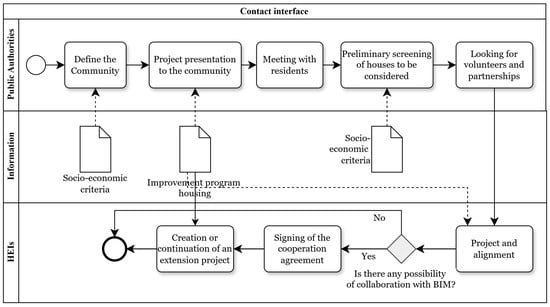
Figure 1
Open AccessArticle
Transactional (Case–Shiller) vs. Hedonic (Zillow) Housing Price Indices (HPI): Different Construction, Same Conclusions?
by
Mark Rzepczynski and Wei Feng
Real Estate 2025, 2(4), 19; https://doi.org/10.3390/realestate2040019 - 5 Nov 2025
Abstract
►▼
Show Figures
Housing price indices (HPIs) are employed to assess the impact of the business cycle, monetary policy, housing policies, and local market dynamics. However, comparative empirical analysis of different HPI methodologies has not been conducted to measure why or when they may diverge and
[...] Read more.
Housing price indices (HPIs) are employed to assess the impact of the business cycle, monetary policy, housing policies, and local market dynamics. However, comparative empirical analysis of different HPI methodologies has not been conducted to measure why or when they may diverge and whether these differences are meaningful. Two leading US HPI choices, the repeat-sale transactional (S&P Case–Shiller) and characteristic-based hedonic (Zillow) indices, although highly correlated, generate different distributions and time-series properties primarily at the city level. The spread between these two HPI choices measures the difference between housing market transaction intensity and a willingness-to-pay characteristic valuation. We find that transactional indices are more volatile, with HPI spreads associated with both macro and local drivers. The transactional index will rise more rapidly in a market with increased buying (positive macro and local market conditions) and fall further in a market with increased selling (negative macro and local market conditions) relative to a hedonic index. A buyer- or seller-biased spread between a transactional and hedonic housing price index (HPI) may impact policy judgments during housing market extremes.
Full article

Figure 1
Open AccessArticle
A Method to Measure Neighborhood Quality with Hedonic Price Models in Three Latin American Cities
by
Marco Aurélio Stumpf González and Diego Alfonso Erba
Real Estate 2025, 2(4), 18; https://doi.org/10.3390/realestate2040018 - 3 Nov 2025
Abstract
►▼
Show Figures
Location effects play a crucial role in the real estate market, encompassing aspects of accessibility and neighborhood quality. While traditional measures exist for accessibility, evaluating neighborhood quality can be a complex task. Understanding these elements is essential for accurately estimating property values, whether
[...] Read more.
Location effects play a crucial role in the real estate market, encompassing aspects of accessibility and neighborhood quality. While traditional measures exist for accessibility, evaluating neighborhood quality can be a complex task. Understanding these elements is essential for accurately estimating property values, whether for commercial or tax purposes. Recently developed methods based on web scraping and automatic detection using artificial intelligence have proven effective but require substantial human and financial resources, often unavailable in small cities. As a solution, this study proposes and evaluates a simpler mechanism for assessing neighborhood quality using Google Street View images and a scoring system in a human-centered approach. Based on image interpretation, a set of weights is assigned to each point, resulting in a micro-neighborhood quality assessment. This study was conducted in three Latin American cities, and the resulting variable was integrated into hedonic price models. The findings demonstrate the feasibility and effectiveness of the proposed approach. The novelty of this study lies in applying a method based on quasi-objective criteria and adapted to cities with limited technological resources.
Full article

Figure 1
Open AccessArticle
A Holistic Sustainability Evaluation for Heritage Upcycling vs. Building Construction Projects
by
Elena Fregonara, Chiara Senatore, Cristina Coscia and Francesca Pasquino
Real Estate 2025, 2(4), 17; https://doi.org/10.3390/realestate2040017 - 8 Oct 2025
Abstract
The paper contributes to the debate on the holistic sustainability assessment of real estate projects, integrating economic, financial, environmental, and social aspects. A methodological study is presented to support decision-making processes involving the preferability ranking of alternative investment scenarios: new building production vs.
[...] Read more.
The paper contributes to the debate on the holistic sustainability assessment of real estate projects, integrating economic, financial, environmental, and social aspects. A methodological study is presented to support decision-making processes involving the preferability ranking of alternative investment scenarios: new building production vs. retrofitting the existing stock, in the context of urban transformation interventions. The study integrates life cycle approaches by introducing the social components besides the economic and environmental ones. Firstly, a composite unidimensional (monetary) indicator calculation is illustrated. The sustainability components are internalized in the NPV calculation through a Discounted Cash-Flow Analysis (DCFA). Life Cycle Costing (LCC) and Life Cycle Assessment (LCA) are suggested to assess the economic and environmental impacts, and the Social Return on Investment (SROI) to assess the intervention’s extra-financial value. Secondly, a methodology based on multicriteria techniques is proposed. The Hierarchical Analytical Process (AHP) model is suggested to harmonize various performance indicators. Focus is placed on the criticalities emerging in both the methodological approaches, while highlighting the relevance of multidimensional approaches in decision-making processes and for supporting urban policies and urban resilience.
Full article
(This article belongs to the Topic Improving Nature-Smart Policies through Innovative Resilient Evaluations)
►▼
Show Figures

Figure 1
Open AccessArticle
Forecasting the Housing Market Sales in Italy: An MLP Neural Network Model
by
Paolo Rosato and Matteo Galante
Real Estate 2025, 2(4), 16; https://doi.org/10.3390/realestate2040016 - 2 Oct 2025
Abstract
Using panel data on 99 Italian provinces in the period between 2005 and 2020, the research investigates the effects of fundamental economic factors on the home sales at the provincial level, in order to build a forecasting model using a non-linear artificial intelligence
[...] Read more.
Using panel data on 99 Italian provinces in the period between 2005 and 2020, the research investigates the effects of fundamental economic factors on the home sales at the provincial level, in order to build a forecasting model using a non-linear artificial intelligence approach (MLP-Multiple Linear Perceptron neural network). There are multiple objectives to this: (a) to test the hypothesis that national, regional and local fundamentals such as interest rates, income, inflation rate, unemployment and demography affect the activity’s degree of the housing market; (b) to verify the effectiveness of a neural network in describing the dynamics of the real estate market; (c) to build a simulation model capable of predicting the effect of changes in fundamentals, also due to economic policy measures, on the market. Empirical results show that neural networks offer better capabilities than linear models in representing the complex relationships between the economic situation and the real estate market. The study provides useful information for regulators to improve the effectiveness of monetary policy to stabilize real estate markets as well as for stakeholders to draw up scenarios of market development.
Full article
(This article belongs to the Topic Improving Nature-Smart Policies through Innovative Resilient Evaluations)
►▼
Show Figures

Figure 1
Open AccessArticle
The Impact of Rising Mortgage Rates on Housing Demand Among Middle-Income Groups: Evidence from Chile
by
Byron J. Idrovo-Aguirre and Francisco-Javier Lozano
Real Estate 2025, 2(3), 15; https://doi.org/10.3390/realestate2030015 - 8 Sep 2025
Abstract
►▼
Show Figures
We present empirical evidence on the sensitivity of housing demand in Chile to changes in mortgage interest rates, focusing on units priced between CLF 2000 and 4000 (approximately USD 80,000 to 160,000). This sector, which comprises nearly two-thirds of the country’s housing supply,
[...] Read more.
We present empirical evidence on the sensitivity of housing demand in Chile to changes in mortgage interest rates, focusing on units priced between CLF 2000 and 4000 (approximately USD 80,000 to 160,000). This sector, which comprises nearly two-thirds of the country’s housing supply, has experienced a significant decline in sales since 2021. Given its size and responsiveness, it represents a key target for policy measures aimed at reactivating the Chilean real estate market, such as demand-side subsidies for middle-income households. Using impulse response functions derived from vector autoregressive (VAR) and semi-structural models estimated via Bayesian methods with Markov Chain Monte Carlo (MCMC) simulations, we find that a 100-basis-point increase in mortgage rates leads to an average annual decline of 18% in housing sales during the first quarter after the shock. This effect results in a cumulative decline of approximately 57% by the end of the first year. A comparable reduction in mortgage rates yields a symmetrical response. Finally, we offer a linear extrapolation of potential impacts under a hypothetical 200-basis-point decrease in mortgage rates.
Full article

Figure 1
Open AccessArticle
How Does the Presence of Subsidized Migrants Impact a Neighborhood’s Rental Real Estate Market? An Examination at the Apartment Level
by
David Rodriguez
Real Estate 2025, 2(3), 14; https://doi.org/10.3390/realestate2030014 - 1 Sep 2025
Abstract
From 31 August 2022 to early 2024, the City of Chicago welcomed nearly 40,000 migrants. Chicago had designated itself as a sanctuary city nearly 40 years ago and has since been a popular destination for migrants, accepting large numbers in other periods throughout
[...] Read more.
From 31 August 2022 to early 2024, the City of Chicago welcomed nearly 40,000 migrants. Chicago had designated itself as a sanctuary city nearly 40 years ago and has since been a popular destination for migrants, accepting large numbers in other periods throughout its history. However, the influx during the period 2022–2024 was unique because of the large amounts of resources local and federal governments dedicated to settling these individuals. Immigrant benefits varied over this period but peaked at $15,000 per family, which did not include services offered by local churches and private organizations. In this study, log-linear multiple regression was employed to determine the impact subsidies can have on the local rental real estate market. According to the study findings, rental real estate rates increased by up to 5.6% in response to subsidization of migrant housing. Additionally, neighborhoods that were adjacent to migrant shelters experienced the greatest additional increase of 29.96%. In addition to the rapidity with which rental real estate pricing can respond to subsidies and policy shifts, the study findings demonstrate the financial benefits that can accrue to real estate owners and managers who participate in the rental marketplace with subsidization.
Full article
Open AccessArticle
Role of Egoistic and Altruistic Values on Green Real Estate Purchase Intention Among Young Consumers: A Pro-Environmental, Self-Identity-Mediated Model
by
Princy Roslin, Benny Godwin J. Davidson, Jossy P. George and Peter V. Muttungal
Real Estate 2025, 2(3), 13; https://doi.org/10.3390/realestate2030013 - 5 Aug 2025
Abstract
►▼
Show Figures
This study explores the role of egoistic and altruistic values on green real estate purchase intention among young consumers in Canada aged between 20 and 40 years. In addition, this study examines the mediating effects of pro-environmental self-identity between social consumption motivation and
[...] Read more.
This study explores the role of egoistic and altruistic values on green real estate purchase intention among young consumers in Canada aged between 20 and 40 years. In addition, this study examines the mediating effects of pro-environmental self-identity between social consumption motivation and green real estate purchase intention. A quantitative cross-sectional research design with an explanatory nature is employed. A total of 432 participating consumers in Canada, comprising 44% men and 48% women, with a graduate educational background accounting for 46.7%, and the ages between 24 and 35 contributing 75.2%, were part of the study, and the data collection used a survey method with a purposive sampling, followed by a respondent-driven method. Descriptive and inferential statistics were performed on the scales used for the study variables. A structural equational model and path analysis were conducted to derive the results, and the relationships were positive and significant. The study results infer the factors contributing to green real estate purchase intention, including altruistic value, egoistic value, social consumption motivation, and pro-environmental self-identity, with pro-environmental self-identity mediating the relationship. This study emphasizes the relevance of consumer values in real estate purchasing decisions, urging developers and marketers to prioritize ethical ideas, sustainable practices, and building a feeling of belonging and social connectedness. Offering eco-friendly amenities and green construction methods might attract clients, but creating a secure area for social interaction is critical. To the best of the authors’ knowledge, this research is the first to explore the role of egoistic and altruistic values on purchase intention, mainly in the housing and real estate sector, with the target consumers being young consumers in Canada.
Full article

Figure 1
Open AccessArticle
Machine Learning Algorithms and Explainable Artificial Intelligence for Property Valuation
by
Gabriella Maselli and Antonio Nesticò
Real Estate 2025, 2(3), 12; https://doi.org/10.3390/realestate2030012 - 1 Aug 2025
Abstract
The accurate estimation of urban property values is a key challenge for appraisers, market participants, financial institutions, and urban planners. In recent years, machine learning (ML) techniques have emerged as promising tools for price forecasting due to their ability to model complex relationships
[...] Read more.
The accurate estimation of urban property values is a key challenge for appraisers, market participants, financial institutions, and urban planners. In recent years, machine learning (ML) techniques have emerged as promising tools for price forecasting due to their ability to model complex relationships among variables. However, their application raises two main critical issues: (i) the risk of overfitting, especially with small datasets or with noisy data; (ii) the interpretive issues associated with the “black box” nature of many models. Within this framework, this paper proposes a methodological approach that addresses both these issues, comparing the predictive performance of three ML algorithms—k-Nearest Neighbors (kNN), Random Forest (RF), and the Artificial Neural Network (ANN)—applied to the housing market in the city of Salerno, Italy. For each model, overfitting is preliminarily assessed to ensure predictive robustness. Subsequently, the results are interpreted using explainability techniques, such as SHapley Additive exPlanations (SHAPs) and Permutation Feature Importance (PFI). This analysis reveals that the Random Forest offers the best balance between predictive accuracy and transparency, with features such as area and proximity to the train station identified as the main drivers of property prices. kNN and the ANN are viable alternatives that are particularly robust in terms of generalization. The results demonstrate how the defined methodological framework successfully balances predictive effectiveness and interpretability, supporting the informed and transparent use of ML in real estate valuation.
Full article
(This article belongs to the Topic Improving Nature-Smart Policies through Innovative Resilient Evaluations)
►▼
Show Figures

Figure 1
Open AccessArticle
Discourse of Military-Assisted Urban Regeneration in Colombo: Political and Elite Influences on Displacing Underserved Communities in Postwar Sri Lanka
by
Janak Ranaweera, Sandeep Agrawal and Rob Shields
Real Estate 2025, 2(3), 11; https://doi.org/10.3390/realestate2030011 - 17 Jul 2025
Abstract
►▼
Show Figures
This study examines the political and elite motives behind Colombo’s ‘world-class city’ initiative and its impact on public housing in underserved communities. Informed by interviews with high-ranking government officials, including urban planning experts and military officers, this study examines how President Rajapaksa’s elite-driven
[...] Read more.
This study examines the political and elite motives behind Colombo’s ‘world-class city’ initiative and its impact on public housing in underserved communities. Informed by interviews with high-ranking government officials, including urban planning experts and military officers, this study examines how President Rajapaksa’s elite-driven postwar Sri Lankan government leveraged military capacities within the neoliberal developmental framework to transform Colombo’s urban space for political and economic goals, often at the expense of marginalized communities. Applying a contextual discourse analysis model, which views discourse as a constellation of arguments within a specific context, we critically analyzed interview discussions to clarify the rationale behind the militarized approach to public housing while highlighting its contradictions, including the displacement of underserved communities and the ethical concerns associated with compulsory relocation. The findings suggest that Colombo’s postwar public housing program was utilized to consolidate authoritarian control and promote speculative urban transformation, treating public housing as a secondary aspect of broader political and economic agendas. Anchored in militarized urban governance, these elite-driven strategies failed to achieve their anticipated economic objectives and deepened socio-spatial inequalities, raising serious concerns about exclusionary and undemocratic planning practices. The paper recommends that future urban planning strike a balance between economic objectives and principles of spatial justice, inclusion, and participatory governance, promoting democratic and socially equitable urban development.
Full article

Figure 1
Open AccessArticle
Macroeconomic and Demographic Determinants of London Housing Prices: A Pre- and Post-Brexit Analysis
by
Maria Stavridou, Thomas Dimopoulos and Martha Katafygiotou
Real Estate 2025, 2(3), 10; https://doi.org/10.3390/realestate2030010 - 7 Jul 2025
Abstract
►▼
Show Figures
This study examines the demographic and macroeconomic factors influencing housing prices in London from Q3 2014 to Q4 2022, focusing on the pre- and post-Brexit referendum periods. Using multiple regression analysis, the research evaluates the impact of interest rates, inflation, construction costs, population
[...] Read more.
This study examines the demographic and macroeconomic factors influencing housing prices in London from Q3 2014 to Q4 2022, focusing on the pre- and post-Brexit referendum periods. Using multiple regression analysis, the research evaluates the impact of interest rates, inflation, construction costs, population changes, and net migration on the housing price index (HPI) across various market segments. The findings suggest that interest rate base rates, consumer price inflation, and construction output price indices were significant predictors of housing price fluctuations. Notably, cash purchases exhibited the strongest explanatory power due to a reduced sensitivity to market changes. Additionally, London’s population was a key determinant, particularly affecting first-time buyers and mortgage-backed purchases. These results contribute to a deeper understanding of the London housing market and offer insights into policy measures addressing housing affordability and investment dynamics.
Full article

Figure 1
Open AccessArticle
Residential Mobility: The Impact of the Real Estate Market on Housing Location Decisions
by
Fabrizio Battisti, Orazio Campo, Fabiana Forte, Daniela Menna and Melania Perdonò
Real Estate 2025, 2(3), 9; https://doi.org/10.3390/realestate2030009 - 3 Jul 2025
Abstract
In the context of increasing digitization, integrating ICT technologies, artificial intelligence, and remote working is altering residential mobility patterns and housing preferences. This study examines the housing market’s impact, focusing on how residential affordability affects residential choices, using a case study of the
[...] Read more.
In the context of increasing digitization, integrating ICT technologies, artificial intelligence, and remote working is altering residential mobility patterns and housing preferences. This study examines the housing market’s impact, focusing on how residential affordability affects residential choices, using a case study of the Metropolitan City of Florence. The analysis employs a methodology centered on the Debt-to-Income Ratio (DTI), which cross-references real estate market values (source: Agenzia delle Entrate and leading real estate portals) with household income brackets to identify affordable areas. The results reveal a clear divide: households with incomes below EUR 26,000 per year (representing about 69% of the population) are excluded from the central urban property market. This evidence confirms regional and national trends, emphasizing a growing mismatch between housing costs and disposable incomes. The study concludes that affordability is a technical–financial parameter and a valuable tool for supporting inclusive urban planning. Its application facilitates the orientation of effective public policies and the identification of socially sustainable housing solutions.
Full article
(This article belongs to the Topic Improving Nature-Smart Policies through Innovative Resilient Evaluations)
►▼
Show Figures

Figure 1
Open AccessArticle
Analytical Decision Support Systems for Sustainable Urban Regeneration
by
Benedetto Manganelli, Vincenzo Del Giudice, Francesco Tajani, Francesco Paolo Del Giudice, Daniela Tavano and Giuseppe Cerullo
Real Estate 2025, 2(3), 8; https://doi.org/10.3390/realestate2030008 - 27 Jun 2025
Cited by 1
Abstract
The rapid urbanization of contemporary cities represents one of the most complex challenges of the 21st century, with profound implications for the environmental, social, and economic sustainability of territories. In this context, urban regeneration emerges as a strategic approach to territorial transformation. The
[...] Read more.
The rapid urbanization of contemporary cities represents one of the most complex challenges of the 21st century, with profound implications for the environmental, social, and economic sustainability of territories. In this context, urban regeneration emerges as a strategic approach to territorial transformation. The complexity of urban dynamics requires the adoption of innovative paradigms and systemic approaches capable of guiding decision-making processes toward eco-sustainable and resilient solutions. This research develops advanced decision support tools for urban regeneration, using the city of Potenza (Italy) as a case study. The main objective is to identify key indicators to evaluate the effectiveness of urban regeneration interventions in advance (ex-ante). The methodology develops a composite economic-financial risk index capable of providing an accurate picture of existing conditions while adapting to the territorial specificities of the analyzed area. This index, which uses the Analytic Hierarchy Process (AHP) technique to integrate elementary economic-financial indicators in order to assess the sustainability level of urban redevelopment projects, is able to synthesize complex economic variables into a single parameter of immediate comprehension, strategically guiding investments toward a sustainable urban development model. The analysis of results highlights a peculiar territorial configuration: semi-central areas present the greatest criticalities, while there is a progressive decrease in risk both toward the central core and toward peripheral and extra-urban areas. The study represents a significant methodological contribution to future urban regeneration initiatives at the local level, promoting an integrated vision of sustainable urban development for the benefit of current and future generations.
Full article
(This article belongs to the Topic Improving Nature-Smart Policies through Innovative Resilient Evaluations)
►▼
Show Figures

Figure 1
Open AccessArticle
Intra-Urban Real Estate Cycles and Spatial Endogenous Regimes: Theory and Some Evidence
by
João Victor Santana Andrade and Renan Pereira Almeida
Real Estate 2025, 2(3), 7; https://doi.org/10.3390/realestate2030007 - 20 Jun 2025
Abstract
This paper investigates the dynamics of intra-urban real estate cycles by examining the segmentation of real estate markets and their spatial heterogeneity. Despite extensive literature on real estate cycles, insights into intra-urban cycles remain scarce. Utilizing a dataset of over 350,000 apartment sales
[...] Read more.
This paper investigates the dynamics of intra-urban real estate cycles by examining the segmentation of real estate markets and their spatial heterogeneity. Despite extensive literature on real estate cycles, insights into intra-urban cycles remain scarce. Utilizing a dataset of over 350,000 apartment sales from 2007 to 2022, first we apply the SKATER (Spatial K’luster Analysis by Edge Tree Removal) algorithm to delineate the city into six distinct clusters, each containing at least 3000 observations, and then analyze the six generated time series of real estate prices. Our findings confirm the hypothesis of market segmentation, revealing significant cyclical differences among the identified submarkets. Analysis indicates that real estate cycles are not uniform across the city. This approach contributes a novel perspective to the existing literature on real estate cycles, emphasizing the need to consider spatial endogenous regimes.
Full article
(This article belongs to the Topic Improving Nature-Smart Policies through Innovative Resilient Evaluations)
►▼
Show Figures
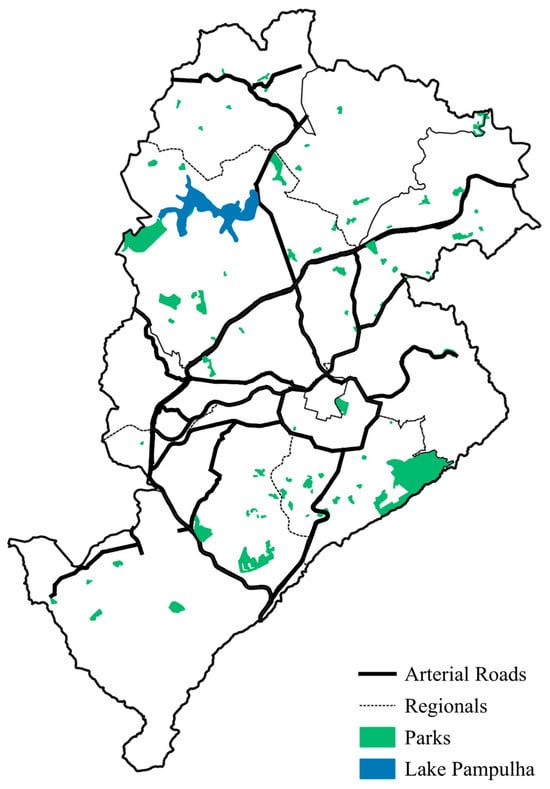
Figure 1
Open AccessArticle
Who Can Afford to Decarbonize? Early Insights from a Socioeconomic Model for Energy Retrofit Decision-Making
by
Daniela Tavano, Francesca Salvo, Marilena De Simone, Antonio Bilotta and Francesco Paolo Del Giudice
Real Estate 2025, 2(2), 6; https://doi.org/10.3390/realestate2020006 - 11 Jun 2025
Cited by 2
Abstract
The real estate sector is steadily moving towards zero-emission buildings, driven by EU policies to achieve near-zero energy (NZEB) buildings by 2050. In Italy, more than 70% of residential buildings fall into the lower energy classes, and this mainly affects low-income households. As
[...] Read more.
The real estate sector is steadily moving towards zero-emission buildings, driven by EU policies to achieve near-zero energy (NZEB) buildings by 2050. In Italy, more than 70% of residential buildings fall into the lower energy classes, and this mainly affects low-income households. As a result, the decarbonisation of the real estate sector presents both technical and socio-economic obstacles. Building on these premises, this study introduces the Retrofit Optimization Problem (ROP), a methodological framework adapted from the Multidimensional Knapsack Problem (MdKP). This method is used in this study to conduct a qualitative analysis of accessibility to retrofit between different socio-economic groups, integrating constraints to simulate restructuring capacity based on different incomes. The results show significant disparities: although many retrofit strategies can meet regulatory energy performance targets, only a small number are financially sustainable for low-income households. In addition, interventions with the greatest environmental impact remain inaccessible to vulnerable groups. These preliminary results highlight important equity issues in the energy transition, indicating the need for specific and income-sensitive policies to prevent decarbonisation efforts from exacerbating social inequalities or increasing the risk of assets being stranded in the housing market.
Full article
(This article belongs to the Topic Improving Nature-Smart Policies through Innovative Resilient Evaluations)
►▼
Show Figures
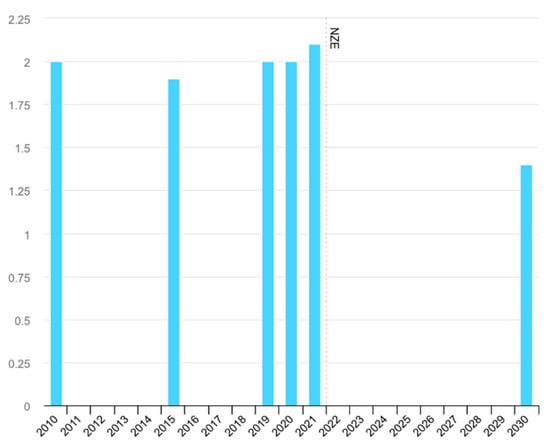
Figure 1
Open AccessArticle
A Methodological Proposal for Determining Environmental Risk Within Territorial Transformation Processes
by
Marco Locurcio, Felicia Di Liddo, Pierluigi Morano, Francesco Tajani and Laura Tatulli
Real Estate 2025, 2(2), 5; https://doi.org/10.3390/realestate2020005 - 10 Jun 2025
Abstract
In recent decades, the intensification of extreme events, such as floods, earthquakes, and hydrogeological instability, together with the spread of pollutants harmful to health, has highlighted the vulnerability of territories and the need to direct urban policies towards sustainable strategies. The built assets
[...] Read more.
In recent decades, the intensification of extreme events, such as floods, earthquakes, and hydrogeological instability, together with the spread of pollutants harmful to health, has highlighted the vulnerability of territories and the need to direct urban policies towards sustainable strategies. The built assets and the real estate sector play a key role in this context; indeed, being among the first ones to be exposed to the effects of climate change, they serve as a crucial tool for the implementation of governance strategies that are more focused on environmental issues. However, the insufficient allocation of public resources to interventions to secure the territory has made it essential to involve private capital interested in combining the legitimate needs of performance with the “ethicality” of the investment. In light of the outlined framework, real estate managers are called upon to take into consideration the environmental risks associated with real estate investments and accurately represent them to investors, especially in the fundraising phase. The tools currently used for the analysis of such risks are based on their perception measured by the “risk premium” criterion, reconstructed on the basis of previous trends and the analyst’s expertise. The poor ability to justify the nature of the risk premium and the uncertainty about future scenario evolutions make this approach increasingly less valid. The present work, starting from the aspects of randomness of the risk premium criterion, aims at its evolution through the inclusion of environmental risk components (seismic, hydrogeological, and pollution).
Full article
(This article belongs to the Topic Improving Nature-Smart Policies through Innovative Resilient Evaluations)
►▼
Show Figures
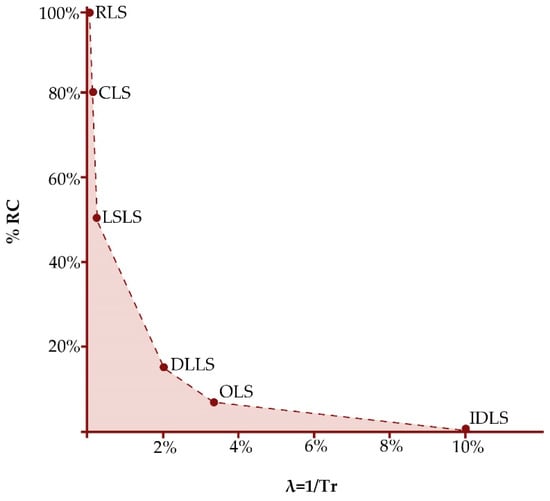
Figure 1
Open AccessArticle
A Data Analysis of the Relationship Between Life Quality Indicators and the Real Estate Market in Italian Provincial Capitals
by
Felicia Di Liddo, Paola Amoruso, Pierluigi Morano, Francesco Tajani and Marco Locurcio
Real Estate 2025, 2(2), 4; https://doi.org/10.3390/realestate2020004 - 27 May 2025
Cited by 2
Abstract
With regard to the Italian context, the present research aims to empirically assess whether and to what extent real estate market dynamics (prices and vibrancy levels) are influenced by the life quality in a specific reference area. In particular, the study compares parameters
[...] Read more.
With regard to the Italian context, the present research aims to empirically assess whether and to what extent real estate market dynamics (prices and vibrancy levels) are influenced by the life quality in a specific reference area. In particular, the study compares parameters related to the residential real estate market—such as the Real Estate Market Observatory quotations and the real estate market intensity index (used as a proxy for market dynamism)—with the Life Quality index developed by the study center of the Italian newspaper “Il Sole 24 Ore” for the selected provincial capitals. Furthermore, by breaking down the Life Quality index into the individual indicators used for its elaboration, the research identifies those most closely linked to real estate market mechanisms to explore these relationships within each context. This approach allows for the identification of potential local differences, providing insights into the degree of geographical heterogeneity. Finally, a GIS-based analysis is employed to graphically represent the various indicators, capturing the potential spatial correlations related to phenomena where the geographic component plays a significant role.
Full article
(This article belongs to the Topic Improving Nature-Smart Policies through Innovative Resilient Evaluations)
►▼
Show Figures

Figure 1
Open AccessArticle
Balancing Public and Private Interests in Urban Transformations: Handling Uncertainty with the Monte Carlo Method
by
Nicholas Fiorentini, Matteo Moriani and Massimo Rovai
Real Estate 2025, 2(2), 3; https://doi.org/10.3390/realestate2020003 - 29 Apr 2025
Abstract
Urban transformations require balancing private real estate interests with the provision of public spaces that enhance sustainability and ecosystem services. This study proposes a probabilistic model to assess the feasibility of transforming buildable areas while ensuring equitable benefits for both private developers and
[...] Read more.
Urban transformations require balancing private real estate interests with the provision of public spaces that enhance sustainability and ecosystem services. This study proposes a probabilistic model to assess the feasibility of transforming buildable areas while ensuring equitable benefits for both private developers and public administrations, with a focus on three areas to be regenerated within the Municipality of Lucca as case studies. Applying the Monte Carlo (MC) method, two probabilistic models—one with a Uniform distribution and the other with a Normal distribution—estimate the expected Transformation Value (TV) and its associated uncertainty. Results highlight the effectiveness of MC-based assessments in managing financial uncertainty, aiding developers in risk evaluation, and supporting policymakers in designing balanced urban planning indices. It was observed that the Uniform model is better suited to situations in which the initial values of the model’s main variables—such as construction costs, post-transformation market value, or transformation duration—are not fully known, whereas the Normal model provides more accurate estimates when the investment scenario is better understood. The results demonstrate that this approach provides, on the one hand, a robust tool for investment risk analysis to private investors and, on the other hand, a way for public institutions to verify whether urban planning indices enable private promoters to contribute effectively to the development of sustainable cities.
Full article
(This article belongs to the Topic Improving Nature-Smart Policies through Innovative Resilient Evaluations)
►▼
Show Figures

Figure 1
Highly Accessed Articles
Latest Books
E-Mail Alert
News
Topics
Topic in
Buildings, Land, Real Estate, Sustainability
Improving Nature-Smart Policies through Innovative Resilient Evaluations
Topic Editors: Pierfrancesco De Paola, Francesco Tajani, Francesco SicaDeadline: 31 December 2025
Topic in
Architecture, Land, Real Estate, Urban Science
Urban Science and Real Estate Dynamics: Insights into Housing, Finance, and Land Use
Topic Editors: Xin Janet Ge, Jyoti Shukla, Godwin Kavaarpuo, Shuya Yang, Piyush TiwariDeadline: 31 January 2026
Topic in
Real Estate, RSEE, Sustainability, Urban Science
Sustainability and Regional Development: Foundations and Challenges for This Symbiotic Relationship
Topic Editors: Dimitrios Tsiotas, Serafeim PolyzosDeadline: 10 April 2027

Special Issues
Special Issue in
Real Estate
Developments in Real Estate Economics
Guest Editor: Gaetano LisiDeadline: 31 December 2025

